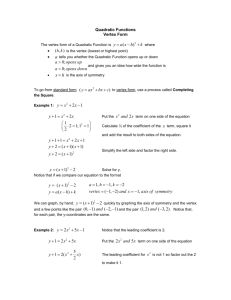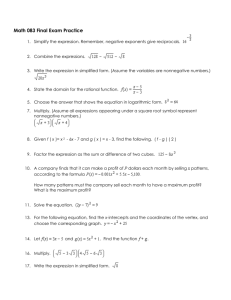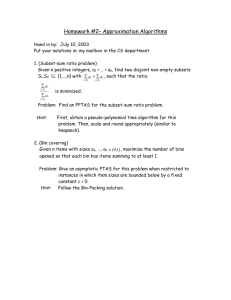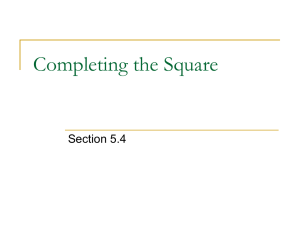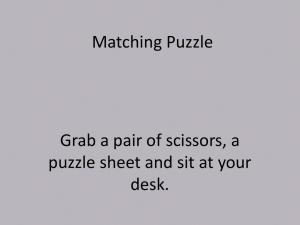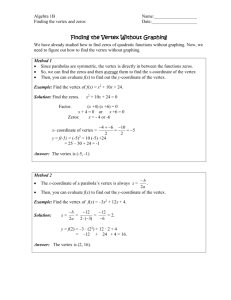Y Intercept
advertisement
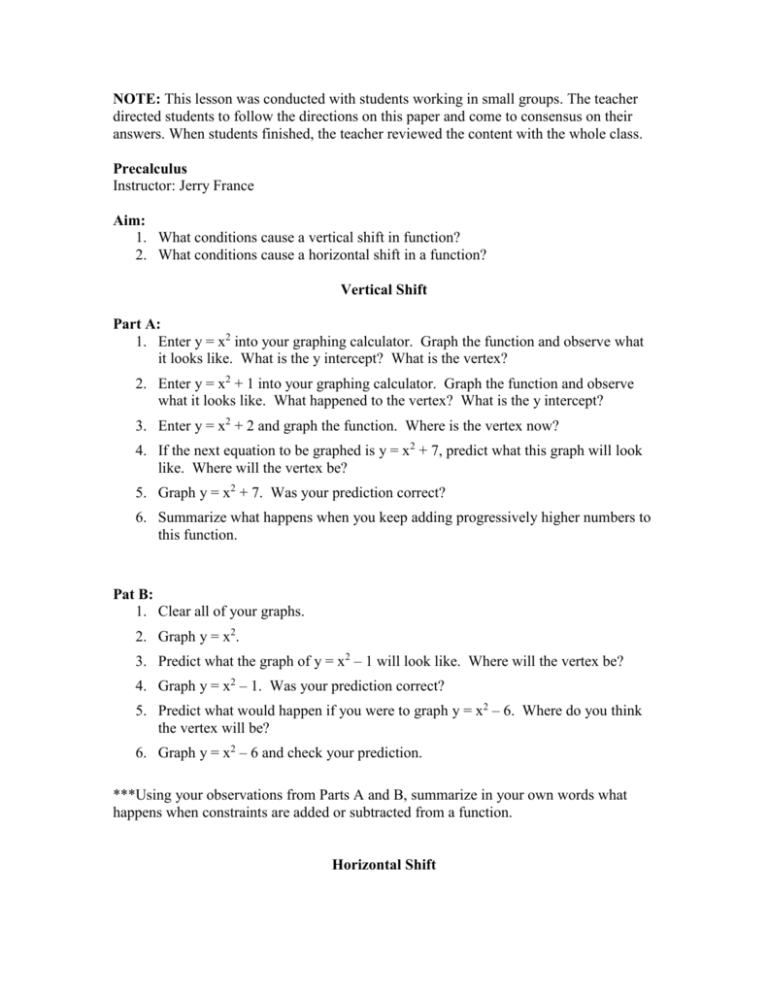
NOTE: This lesson was conducted with students working in small groups. The teacher directed students to follow the directions on this paper and come to consensus on their answers. When students finished, the teacher reviewed the content with the whole class. Precalculus Instructor: Jerry France Aim: 1. What conditions cause a vertical shift in function? 2. What conditions cause a horizontal shift in a function? Vertical Shift Part A: 1. Enter y = x2 into your graphing calculator. Graph the function and observe what it looks like. What is the y intercept? What is the vertex? 2. Enter y = x2 + 1 into your graphing calculator. Graph the function and observe what it looks like. What happened to the vertex? What is the y intercept? 3. Enter y = x2 + 2 and graph the function. Where is the vertex now? 4. If the next equation to be graphed is y = x2 + 7, predict what this graph will look like. Where will the vertex be? 5. Graph y = x2 + 7. Was your prediction correct? 6. Summarize what happens when you keep adding progressively higher numbers to this function. Pat B: 1. Clear all of your graphs. 2. Graph y = x2. 3. Predict what the graph of y = x2 – 1 will look like. Where will the vertex be? 4. Graph y = x2 – 1. Was your prediction correct? 5. Predict what would happen if you were to graph y = x2 – 6. Where do you think the vertex will be? 6. Graph y = x2 – 6 and check your prediction. ***Using your observations from Parts A and B, summarize in your own words what happens when constraints are added or subtracted from a function. Horizontal Shift Part C: 1. Clear all of your graphs. 2. Graph y = x2. 3. If you were to graph y = (x – 1)2, predict what the graph will look like. Where will the vertex be? 4. Graph y = (x – 1)2. What happened to the graph? Did this graph match your prediction? Why or why not? 5. Predict where the vertex will be for y = (x – 5)2. 6. Graph y = (x – 5)2 and compare it to your prediction. 7. Summarize Part C: “When a number is subtracted from x before it is squared…” Part D: 1. Clear all of your graphs. 2. Graph y = x2. 3. Using your knowledge of what happened in Part C, predict what the graph of y = (x + 1)2 will look like. Where will the vertex be? 4. Graph y = (x + 1)2. Write a sentence explaining the difference between the graphs y = x2 and y = (x + 1)2. 5. Predict what the vertex will be of the graph y = (x + 4)2. 6. Graph y = (x + 4)2 to check your prediction. *** Using your observations from Parts C and D, summarize in you own words what happens when a constant is added to or subtracted from a function before it is squared. Practice: Using the following examples, predict where the vertex will be for each graph. 1. g(x) = (x – 4)2 – 2 2. k(x) = (x + 2)2 + 1 3. m(x) = (x – 2)2 + 4 4. n(x) = (x + 5)2 – 6 *** Check your answers with your graphing calculator.



